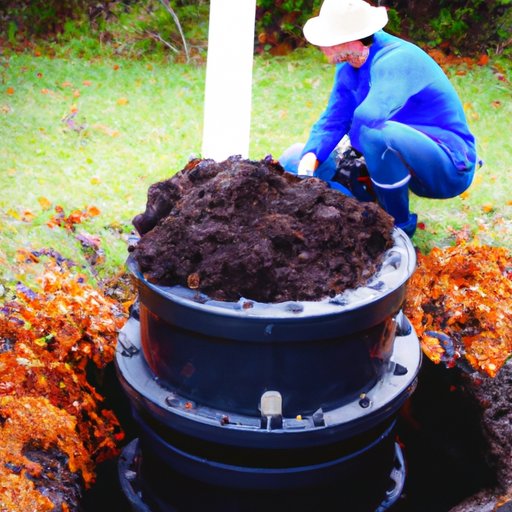Introduction
A septic system is an underground wastewater treatment system that helps to remove contaminants from water before it goes into local bodies of water. It is often used in rural areas where public sewer systems are not available. In this article, we will explore how a septic system works and discuss its components, maintenance tips, and environmental benefits.
Explaining the Basics of Septic Systems
Before we dive into the details, let’s start with the basics: what is a septic system and how does it work? A septic system is a self-contained, on-site wastewater treatment system that collects and treats household wastewater. It typically consists of two main components: a tank and a drain field. The tank holds wastewater, while the drain field filters the wastewater before releasing it back into the environment.
Components of a Septic System and Their Function
Septic systems come in many different shapes and sizes, but all have the same basic components. The most common type of septic system is a gravity-fed system, which uses gravity to move wastewater from the house to the tank. There are also pressure-fed systems, which use pumps or blowers to push wastewater through pipes.
The tank is the most important component of a septic system because it is responsible for collecting and treating household wastewater. The tank is typically made out of concrete, fiberglass, or plastic and is usually buried underground. Inside the tank, wastewater is separated into three layers: solids, scum, and effluent. Solids sink to the bottom and are broken down by bacteria. Scum floats to the top and is removed by skimming. Effluent is the liquid that passes through the tank and is filtered by the drain field.
The drain field is a series of underground pipes that filter the wastewater before it is released into the environment. The pipes are typically made out of PVC and are buried several feet underground. The pipes are perforated to allow the wastewater to slowly seep into the surrounding soil, where it is filtered and purified before entering local bodies of water.

How Wastewater is Treated in a Septic System
Once the wastewater enters the tank, it is treated by bacterial activity. Bacteria feed on the organic matter in the wastewater and break it down into simpler compounds. This process removes harmful pollutants and reduces the amount of solid waste in the wastewater. The wastewater then passes through the drain field, where it is further filtered and purified by the surrounding soil.
It is important to note that a septic system is not a permanent solution to wastewater treatment. Regular maintenance and inspections are necessary to ensure that the system is functioning properly and that the wastewater is being effectively treated. Without regular maintenance, the system can become clogged or damaged, leading to costly repairs or even replacement.

Care and Maintenance Tips for Your Septic System
Proper care and maintenance is essential for keeping your septic system in good working order. Here are some tips for ensuring that your septic system runs smoothly:
- Have your septic system inspected every three to five years.
- Avoid putting harsh chemicals, such as bleach and paint, down the drains.
- Be mindful of how much you use water. Too much water can overload the system.
- Do not plant trees or shrubs near the septic tank or drain field.
- Keep the area around the septic tank free of debris and vegetation.

Troubleshooting Common Septic System Problems
If your septic system is not functioning properly, there are a few steps you can take to identify and resolve the issue. First, check for signs of failure, such as slow draining sinks or toilets, unpleasant odors, or wet spots in the yard. If these signs are present, investigate potential causes, such as a blocked or clogged pipe or a malfunctioning pump.
Identifying and Resolving Septic System Issues Quickly
If you suspect that there is an issue with your septic system, it is important to take prompt action. Make sure to inspect the tank and drain field for any signs of damage or blockage. If you cannot identify the problem, it is best to contact a professional septic service provider who can diagnose and repair the issue quickly and efficiently.

Environmental Benefits of Installing a Septic System
Installing a septic system can offer numerous environmental benefits. By treating wastewater on-site, a septic system can reduce water pollution and improve water quality in local bodies of water. Additionally, a septic system can help to recharge groundwater by allowing wastewater to slowly seep into the soil. According to a study published in the journal Environmental Science and Technology, “groundwater recharge by wastewater infiltration can provide a significant source of fresh water in arid regions.”
Conclusion
A septic system is an effective and efficient way to treat household wastewater. Knowing how a septic system works and how to properly maintain it is essential for keeping it running smoothly. Regular inspections and maintenance can help to prevent costly repairs and ensure that the system is functioning properly. Additionally, a septic system can offer numerous environmental benefits, such as reduced water pollution and increased groundwater recharge.
(Note: Is this article not meeting your expectations? Do you have knowledge or insights to share? Unlock new opportunities and expand your reach by joining our authors team. Click Registration to join us and share your expertise with our readers.)
